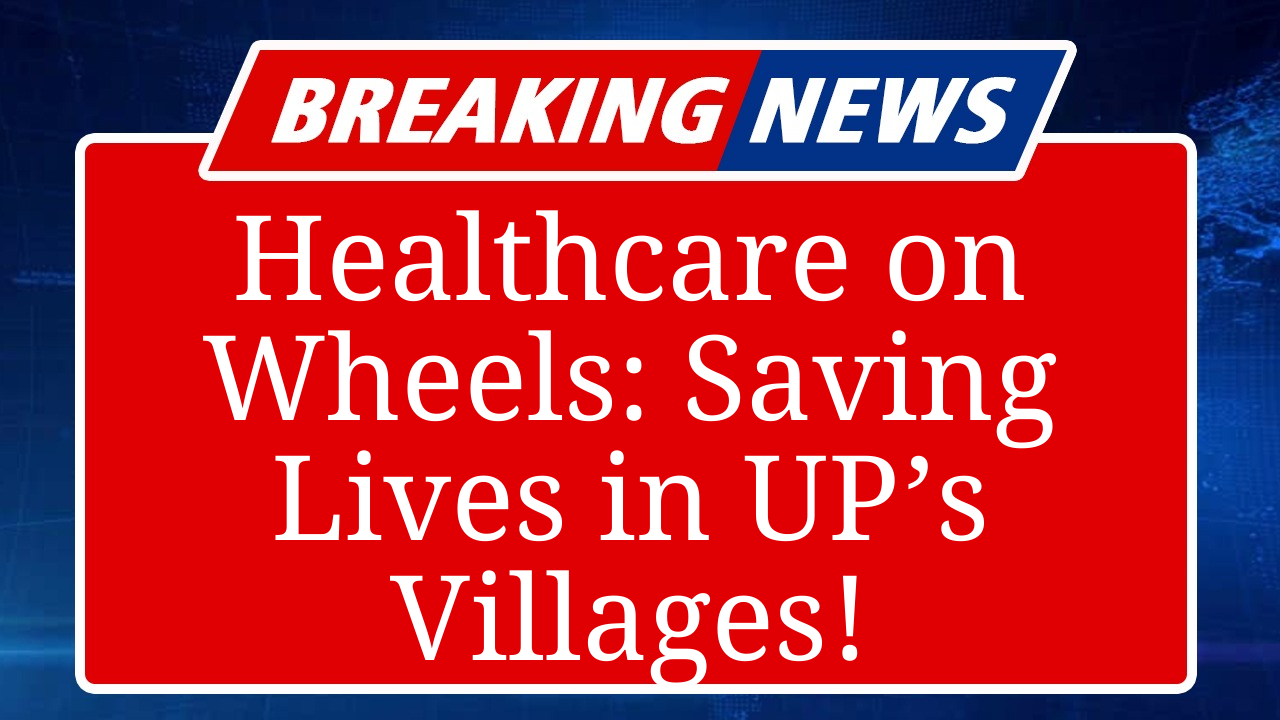Mobile clinics in Uttar Pradesh are revolutionizing rural healthcare by delivering essential medical services directly to remote villages. These clinics address critical gaps in access, offering primary care, vaccinations, and maternal health services to underserved communities. With real-time data showing improved health outcomes, they are a lifeline for millions facing barriers like distance and poverty.
Mobile Clinics Transform Rural Healthcare in Uttar Pradesh
In Uttar Pradesh, where over 80% of the population resides in rural areas, access to healthcare has long been a challenge due to inadequate infrastructure, long distances to hospitals, and economic constraints. Mobile clinics have emerged as a game-changer, bringing medical services directly to the doorsteps of remote villages. These customized vehicles, equipped with medical equipment and staffed by doctors, nurses, and community health workers, are bridging the healthcare gap for millions.
According to recent data from the Uttar Pradesh Health Department, as of August 2025, over 500 mobile clinics operate across the state, serving more than 10,000 villages. These clinics provide a range of services, including general check-ups, vaccinations, prenatal and postnatal care, and screenings for diseases like diabetes, hypertension, and tuberculosis. In 2024 alone, these clinics conducted over 1.2 million patient visits, a 25% increase from the previous year, highlighting their growing reach.
One notable initiative is the National Health Mission’s Mobile Medical Units (MMUs), which target underserved regions like Bundelkhand and Purvanchal. Each unit is equipped with diagnostic tools, such as blood pressure monitors, glucometers, and portable ultrasound machines, enabling early detection and treatment. For instance, in Mahoba district, mobile clinics have reduced maternal mortality rates by 15% since 2023 by providing timely antenatal care to pregnant women who previously had to travel over 50 kilometers to reach a hospital.
These clinics also play a crucial role in immunization drives. In 2025, Uttar Pradesh achieved a 92% vaccination coverage for children under five, partly due to mobile clinics reaching remote hamlets. For example, in Shravasti, one of the state’s most backward districts, mobile units vaccinated over 12,000 children against measles and polio in the first half of 2025, according to district health records.
The impact extends beyond immediate care. Mobile clinics foster trust in communities wary of formal healthcare systems due to cultural or economic barriers. Community health workers, often local residents, provide health education in native languages, addressing issues like sanitation, nutrition, and family planning. In Gorakhpur, mobile clinics have increased awareness of vector-borne diseases, contributing to a 20% decline in dengue cases in 2024 compared to 2023.
However, challenges persist. Limited funding and maintenance issues can disrupt operations, while poor road connectivity in some areas hampers access. Health officials report that 10% of mobile units in eastern Uttar Pradesh were non-operational in July 2025 due to mechanical failures. Despite these hurdles, partnerships with NGOs and private organizations are scaling up efforts. For instance, the Tata Trusts have deployed 50 additional mobile clinics in 2025, focusing on chronic disease management in districts like Varanasi and Mirzapur.
The state government plans to expand the fleet by 200 units by 2026, integrating telemedicine capabilities to connect rural patients with specialists in urban centers. This aligns with India’s broader push for digital health, with real-time data from mobile clinics feeding into the Ayushman Bharat Digital Mission for better health tracking and policy planning. In a state where healthcare disparities are stark, mobile clinics are proving to be a vital tool in ensuring no village is left behind.
Disclaimer: This article is based on recent reports, official data from the Uttar Pradesh Health Department, and insights from public health initiatives like the National Health Mission. Information is sourced from credible news outlets, government releases, and NGO reports. The data reflects the latest available figures as of August 2025.

